This guide explores the importance of denture teeth shape, focusing on aesthetics, functionality, and comfort. It helps individuals understand how shape impacts appearance, speech, and overall quality of life, offering insights into selecting the right fit for personalized needs and ensuring a natural, confident smile.

Why Denture Teeth Shape Matters
The shape of denture teeth plays a crucial role in both aesthetics and functionality. It directly impacts the wearer’s appearance, speech, and comfort. Properly shaped teeth ensure a natural-looking smile, restore facial symmetry, and enhance confidence. Functionally, the shape affects chewing efficiency and bite alignment, which are essential for proper digestion and oral health. Misshapen teeth can lead to discomfort, difficulty speaking, and an unnatural appearance. The right shape aligns with the individual’s facial structure and personal characteristics, creating a harmonious and realistic look. Thus, selecting the appropriate denture teeth shape is vital for achieving optimal form, function, and overall satisfaction.
Factors Influencing Denture Teeth Shape
Facial structure, bite alignment, and personal aesthetics are key factors influencing denture teeth shape. These elements ensure a natural, functional, and visually appealing outcome for the wearer.
Facial Structure and Denture Teeth Shape
Facial structure plays a crucial role in determining the most suitable denture teeth shape. The shape and size of the jawline, face shape, and overall proportions must be considered to ensure a harmonious appearance. For instance, individuals with a square face may benefit from more rounded teeth to soften their features, while those with a round face might opt for slightly tapering teeth to create balance. The goal is to select teeth that complement the natural contours of the face, restoring both function and aesthetics. A well-matched denture teeth shape enhances facial symmetry, ensuring a natural and confident smile that aligns with the wearer’s unique features.
Bite and Occlusion in Denture Teeth Selection
Bite and occlusion are critical factors in denture teeth selection, ensuring proper alignment and function. The way upper and lower teeth meet affects chewing, speech, and comfort. Correct occlusion prevents uneven wear and discomfort, while improper alignment can lead to issues like difficulty speaking or digesting food. Dentists assess a patient’s bite to choose teeth shapes that maintain natural chewing patterns, enhancing both functionality and aesthetics. Proper alignment ensures dentures feel natural, supporting overall oral health and confidence. This step is vital for creating dentures that not only fit well but also restore normal jaw movement and bite force, contributing to long-term comfort and satisfaction.
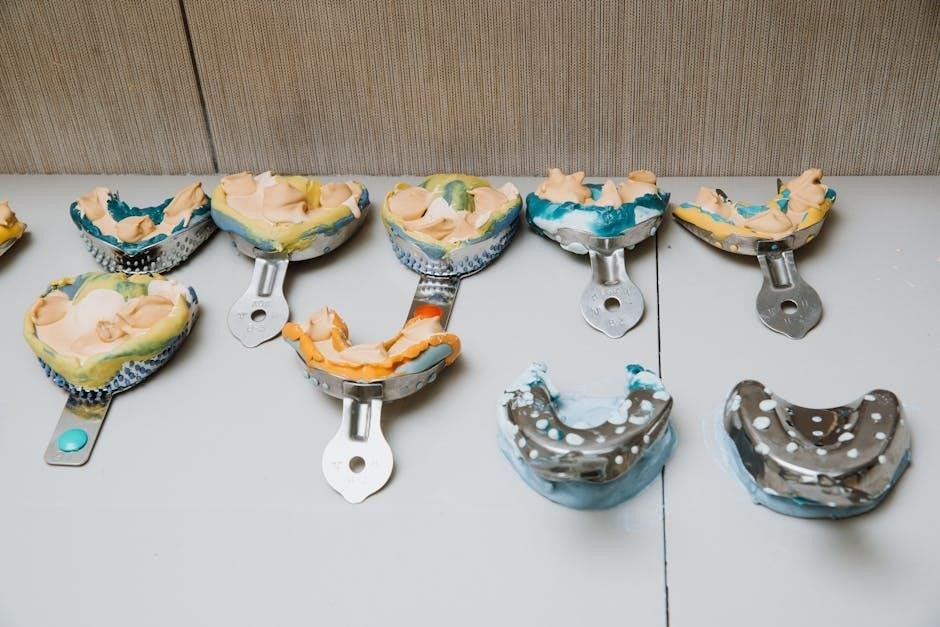
Types of Denture Teeth Shapes
Denture teeth shapes vary, offering options like rounded, tapered, and square forms. Each type caters to different aesthetic, functional, and comfort needs, ensuring a personalized fit and natural appearance.

Rounded Teeth Shape for Dentures
Rounded teeth shapes are a popular choice for dentures, offering a natural and soft appearance. They are ideal for individuals with rounded facial features, as they complement the overall aesthetics. This shape minimizes the risk of sharp edges, enhancing comfort and reducing irritation to the gums and surrounding tissues. Rounded teeth are also known for their ease of adaptation, making them suitable for new denture wearers. They contribute to clear speech and chewing efficiency, providing a balanced functional and aesthetic solution. Customization options allow for tailored fit and shade, ensuring a harmonious match with the patient’s natural look. Proper maintenance and alignment are key to maximizing the benefits of rounded denture teeth, ensuring long-term satisfaction and confidence.
Tapered Teeth Shape for Dentures
Tapered teeth shapes for dentures are characterized by their narrow, pointed form, which gradually tapers toward the incisal edge. This design is often recommended for individuals with angular or square facial features, as it creates a harmonious balance with their facial structure. Tapered teeth are known for their aesthetic appeal, offering a more defined and youthful appearance. They also provide excellent functionality, enabling clear speech and efficient chewing. The tapered shape can enhance the natural look of the smile while maintaining durability. However, they may require more precise alignment to ensure optimal comfort and performance. Proper customization and maintenance are essential to maximize the benefits of tapered denture teeth, ensuring both aesthetics and functionality are preserved over time.
Square Teeth Shape for Dentures
Square teeth shapes for dentures are characterized by their broad, flat form with sharp, defined edges. This design is often recommended for individuals with square or angular facial features, as it complements their natural appearance and creates balance. Square teeth are known for their strong, youthful aesthetic and are particularly effective in restoring a confident smile. They are highly functional, enabling clear speech and efficient chewing. However, square teeth may appear bulky if not properly aligned, so precise customization is essential. Regular maintenance and proper fitting are crucial to ensure comfort and longevity. Square teeth are a popular choice for those seeking a durable, natural-looking denture solution that enhances both aesthetics and functionality.
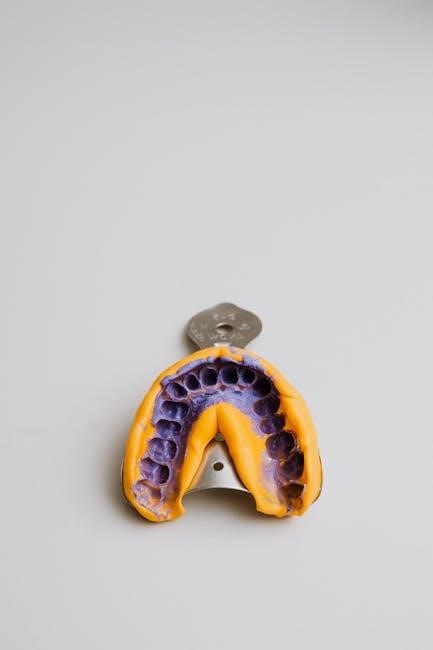
Proportion and Alignment of Denture Teeth
Proportion ensures denture teeth look natural, while alignment affects both aesthetics and functionality, contributing to a comfortable, confident fit and restoring proper oral function.
Importance of Proportion in Denture Aesthetics
Proportion in denture aesthetics ensures a natural and harmonious appearance, balancing the size and shape of teeth with the individual’s facial structure. Correctly proportioned denture teeth enhance the overall facial symmetry, creating a more youthful and visually appealing smile. They also contribute to proper bite alignment and chewing efficiency, ensuring functionality aligns with aesthetics. Misproportioned teeth can lead to an unnatural look, potentially affecting self-confidence. Achieving the right balance requires careful consideration of tooth size, shape, and arrangement, tailored to the patient’s unique features. This attention to detail helps restore not only dental function but also the patient’s emotional well-being, making proportion a critical factor in successful denture design and aesthetic satisfaction.
Aligning Denture Teeth for Natural Appearance
Proper alignment of denture teeth is essential for achieving a natural and aesthetically pleasing smile. When teeth are correctly aligned, they complement the patient’s facial features and restore a balanced, harmonious appearance. Misaligned teeth can create an unnatural look, potentially drawing unwanted attention. Alignment also plays a crucial role in ensuring proper bite and occlusion, which are vital for chewing efficiency and speech clarity. A skilled dentist carefully positions each tooth to match the individual’s natural bite and facial structure, ensuring a seamless integration with their overall appearance. Proper alignment not only enhances aesthetics but also improves functionality, contributing to the wearer’s confidence and quality of life. This attention to detail ensures dentures look and function naturally, making them nearly indistinguishable from real teeth.
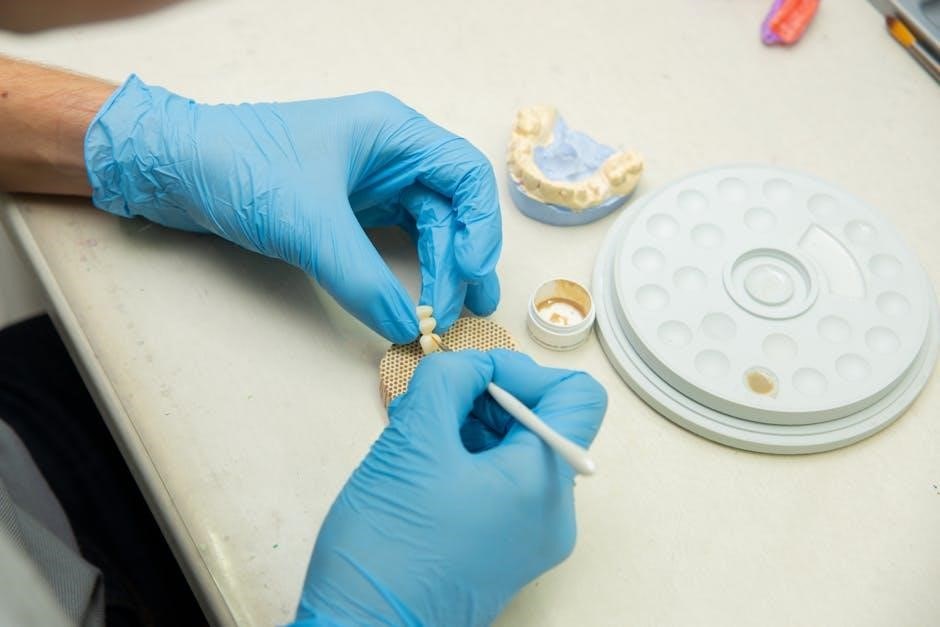
Aesthetics and Functionality of Denture Teeth Shape
Denture teeth shape balances aesthetics and functionality, ensuring a natural appearance and proper fit. It supports facial structure, chewing efficiency, and speech clarity, enhancing confidence and comfort.
Balancing Aesthetics and Function in Denture Design
Balancing aesthetics and functionality in denture design is crucial for creating natural-looking and functional teeth. Aesthetics focuses on the visual appeal, ensuring denture teeth match the patient’s facial structure, skin tone, and natural tooth color. Functionality prioritizes how well the dentures perform during chewing, speaking, and maintaining facial expressions. Achieving this balance requires careful selection of tooth shape, size, and alignment to restore both confidence and oral performance. Modern advancements, like CAD technology, enable precise customization, blending artistic and technical aspects seamlessly. This harmony ensures dentures not only look natural but also provide optimal comfort and usability, enhancing the wearer’s quality of life and overall satisfaction with their smile.
Impact of Tooth Shape on Speech and Comfort
Tooth shape significantly influences speech clarity and comfort in denture wearers. Rounded teeth often facilitate smoother speech, particularly for sounds requiring precise tongue-tooth contact, while tapered or square shapes may alter articulation. Misaligned or improperly shaped teeth can cause difficulty pronouncing certain words, affecting communication confidence. Comfort is also impacted, as ill-fitting shapes may cause irritation or discomfort in the mouth. Properly designed denture teeth ensure even distribution of force during chewing and speaking, minimizing discomfort and enhancing overall oral function. The right balance between shape, alignment, and individual oral anatomy is essential for optimal speech and long-term comfort, ensuring dentures feel natural and functional.

Choosing the Right Denture Teeth Shape
Selecting the ideal denture teeth shape involves considering facial structure, bite alignment, and aesthetic preferences to ensure a natural appearance and optimal functionality for each individual.
How to Select Denture Teeth Shape for Individual Needs
Selecting the right denture teeth shape begins with assessing personal needs, including facial structure, bite alignment, and aesthetic preferences. A prosthodontist evaluates these factors to recommend shapes that enhance natural appearance and functionality. Rounded, tapered, or square teeth may be suggested based on individual characteristics. Comfort and speech clarity are also considered to ensure the chosen shape supports daily activities. Modern advancements, like CAD design, allow for customized fits. Patients should discuss lifestyle, budget, and long-term goals with their dentist to make an informed decision. Testing different shapes during the fitting process helps ensure satisfaction and optimal results for a confident, natural-looking smile.
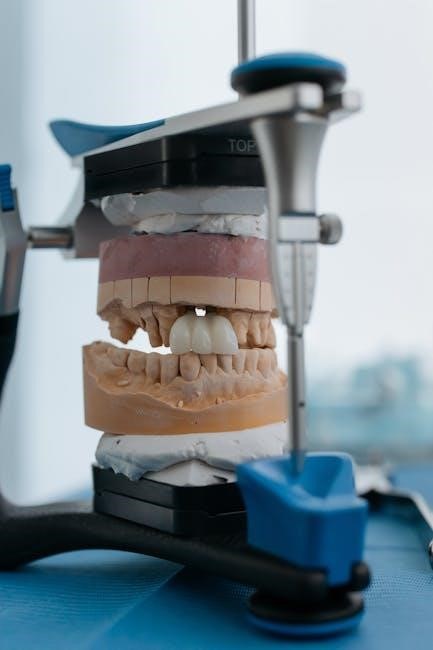
Modern Advancements in Denture Teeth Shape
Modern advancements in denture teeth shape include CAD/CAM technology and 3D printing, enabling precise customization and improved fit. These innovations enhance aesthetics, comfort, and functionality for patients.
Computer-Aided Design (CAD) for Custom Denture Teeth
Computer-Aided Design (CAD) revolutionizes denture teeth customization by creating precise digital models. This technology allows dentists to design denture teeth with exact shape, size, and color to match natural teeth. CAD ensures a perfect fit and aesthetic appeal by considering facial structure and bite alignment. It streamlines the fabrication process, reducing errors and improving consistency. With CAD, patients benefit from highly personalized dentures that enhance comfort and functionality. The integration of CAD with 3D printing further enables rapid production of custom denture teeth, ensuring accuracy and durability. This modern approach transforms traditional denture-making, offering superior results and patient satisfaction.
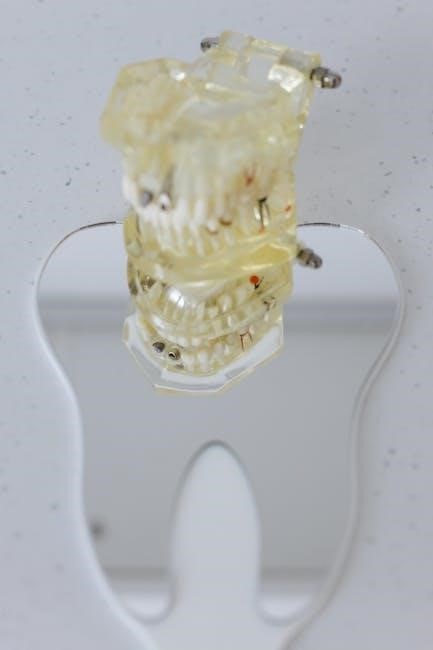
Maintenance and Care of Denture Teeth Shape
Regular cleaning with mild detergents and avoiding harsh chemicals help maintain denture shape. Store properly when not in use to prevent warping. Schedule regular dental check-ups.
Tips for Maintaining Denture Teeth Shape and Appearance

Proper care is essential to maintain the shape and appearance of denture teeth. Clean dentures daily with mild soap and water, avoiding abrasive materials that can scratch the surface. Soak dentures overnight in a recommended solution to maintain hygiene and shape. Avoid using harsh chemicals or hot water, as they may warp or discolor the teeth. Store dentures in a protective case when not in use to prevent bending or breaking. Regular dental check-ups ensure proper fit and address any wear or damage early. Avoid chewing hard objects, like ice, to preserve the shape and integrity of the denture teeth. By following these tips, dentures will remain comfortable, functional, and aesthetically pleasing for years.
Final Thoughts on Denture Teeth Shape Guide
Selecting the right denture teeth shape is crucial for both aesthetics and functionality. It impacts speech, comfort, and overall confidence. Modern advancements like CAD technology allow for precise customization, ensuring a natural fit. Proper maintenance and care are essential to preserve the shape and appearance of dentures. Understanding individual needs and consulting with a prosthodontist can lead to a tailored solution. The guide emphasizes the importance of balancing aesthetics with functional requirements, ensuring dentures enhance the wearer’s quality of life. By prioritizing personalization and care, individuals can achieve a confident, natural smile that lasts.